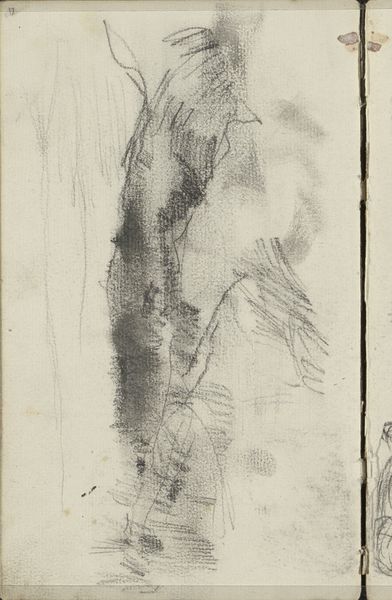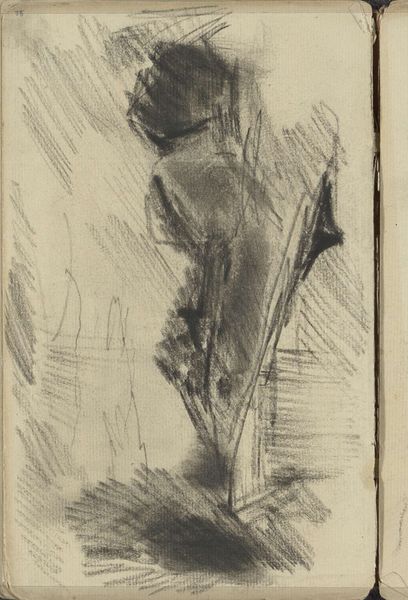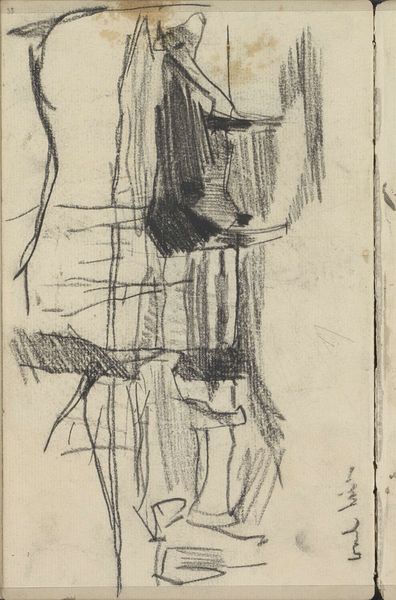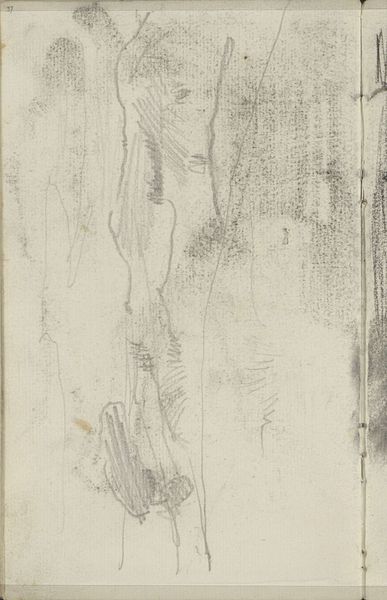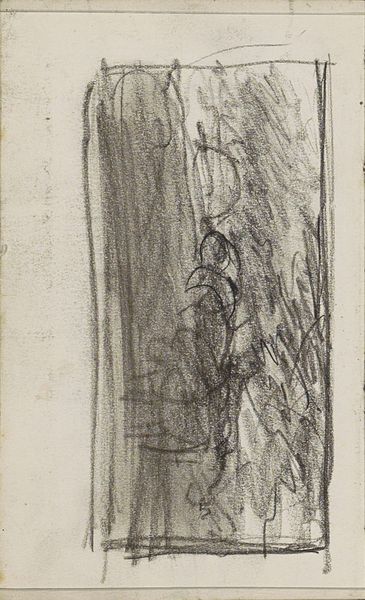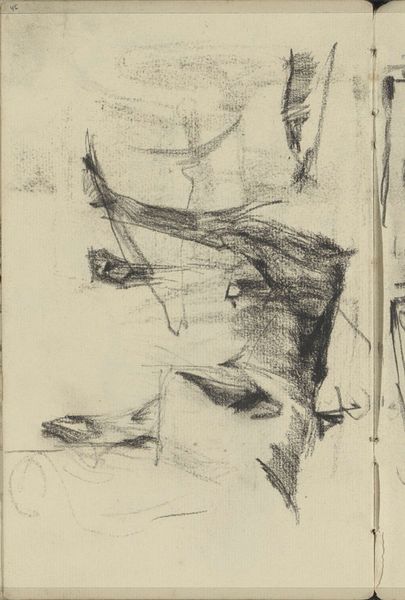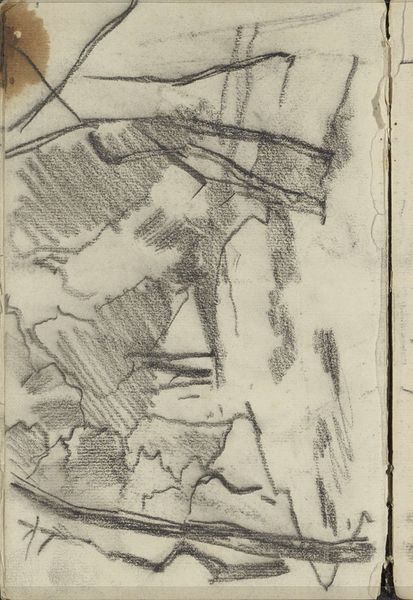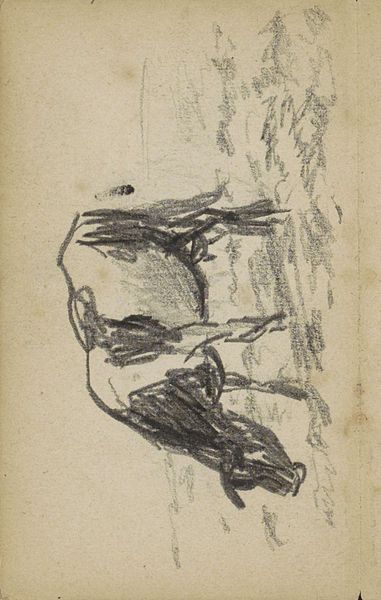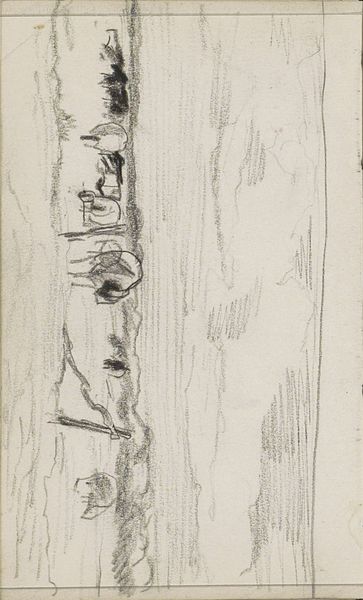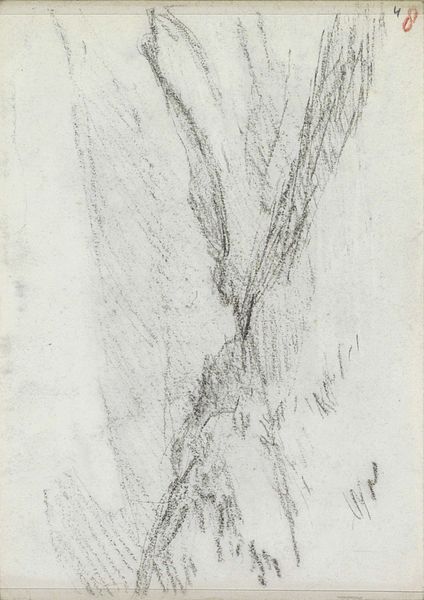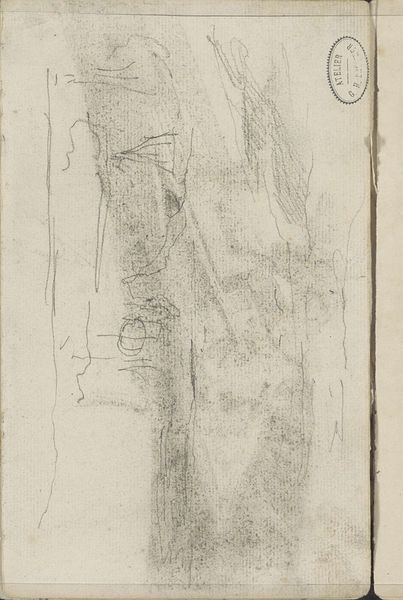
drawing, pencil
#
drawing
#
pencil sketch
#
landscape
#
pencil
#
line
#
realism
Copyright: Rijks Museum: Open Domain
Curator: Here we have "Duinlandschap," or "Dune Landscape," a drawing in pencil by George Hendrik Breitner, probably from around 1882 to 1886. It's currently held at the Rijksmuseum. What's your initial feeling about this work? Editor: I'm struck by how transient it feels. The fleeting quality of the pencil lines gives the impression of a place always on the verge of being blown away, reforming somewhere else. Ephemeral, wouldn't you say? Curator: Precisely! Breitner was very interested in capturing the immediacy of a moment, even in something as seemingly stable as a landscape. The loose, sketchy lines, especially, emphasize the wind and constant movement of sand. Notice how he uses hatching and smudging to suggest depth and texture. It's not about precise representation, it's about the *experience* of the dunes. Editor: And the lines themselves, so decisive, yet they almost seem to disappear into the background. There's a real sense of visual encoding here: dunes often symbolize change, transition. Their ever-shifting nature reflecting inner psychological landscapes. Breitner seems to be hinting at something just beneath the surface. Curator: It certainly resonates on multiple levels. The "line" work is particularly striking. Look at the strong verticals contrasted with the sweeping horizontals, the details that almost border on abstraction... there's a tension here, like the wind wrestling with the solidity of the land. It gives the landscape a vibrant, restless energy. Editor: It's interesting you mention the abstraction. Dunes themselves are these in-between spaces, borders. As a sketched observation of nature, it becomes something more—a mirror reflecting the viewer's own sense of instability or adaptation. It reminds me how powerfully simple tools, like pencil lines, can communicate profound emotional states. Curator: Definitely. It’s a deceptively simple drawing that invites deep contemplation. You start by seeing a windswept landscape but end up thinking about our own impermanence, about the beauty in change, the resilience in shifting sands. Editor: It does feel quite transformative. It speaks to the beauty found within nature's continuous reshaping. What starts as sand can also feel like self. Thanks, George, for sharing your moment.
Comments
No comments
Be the first to comment and join the conversation on the ultimate creative platform.
